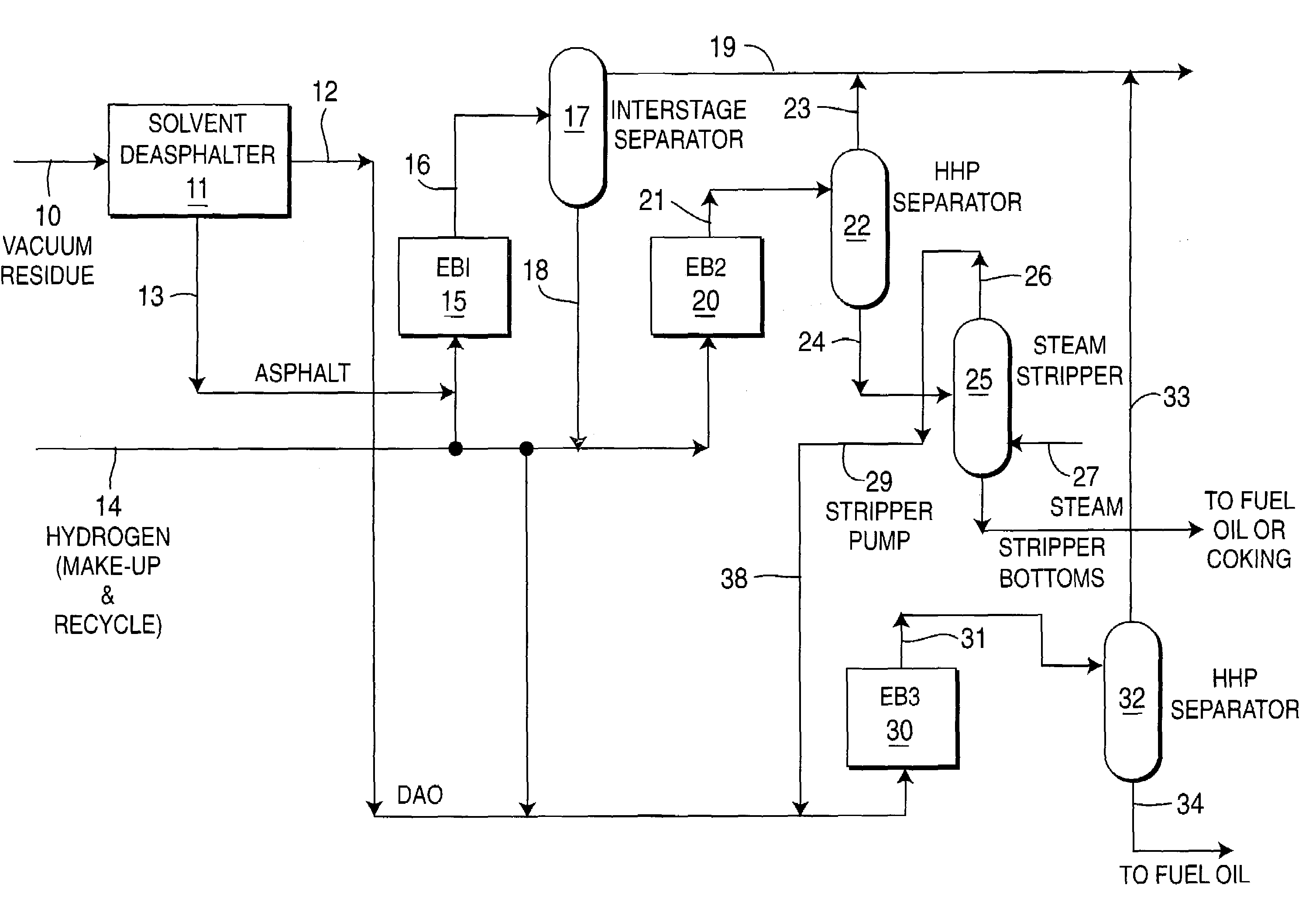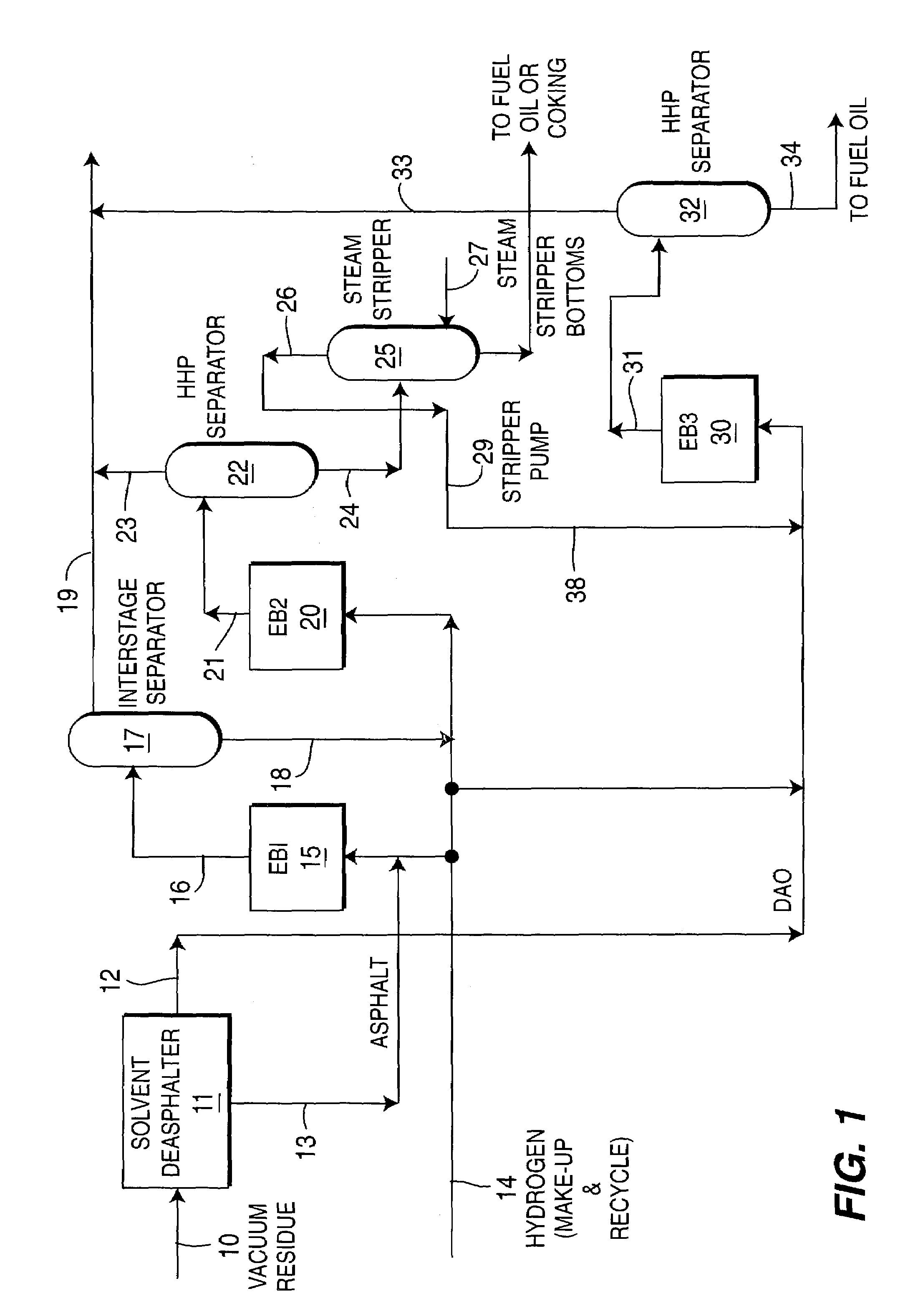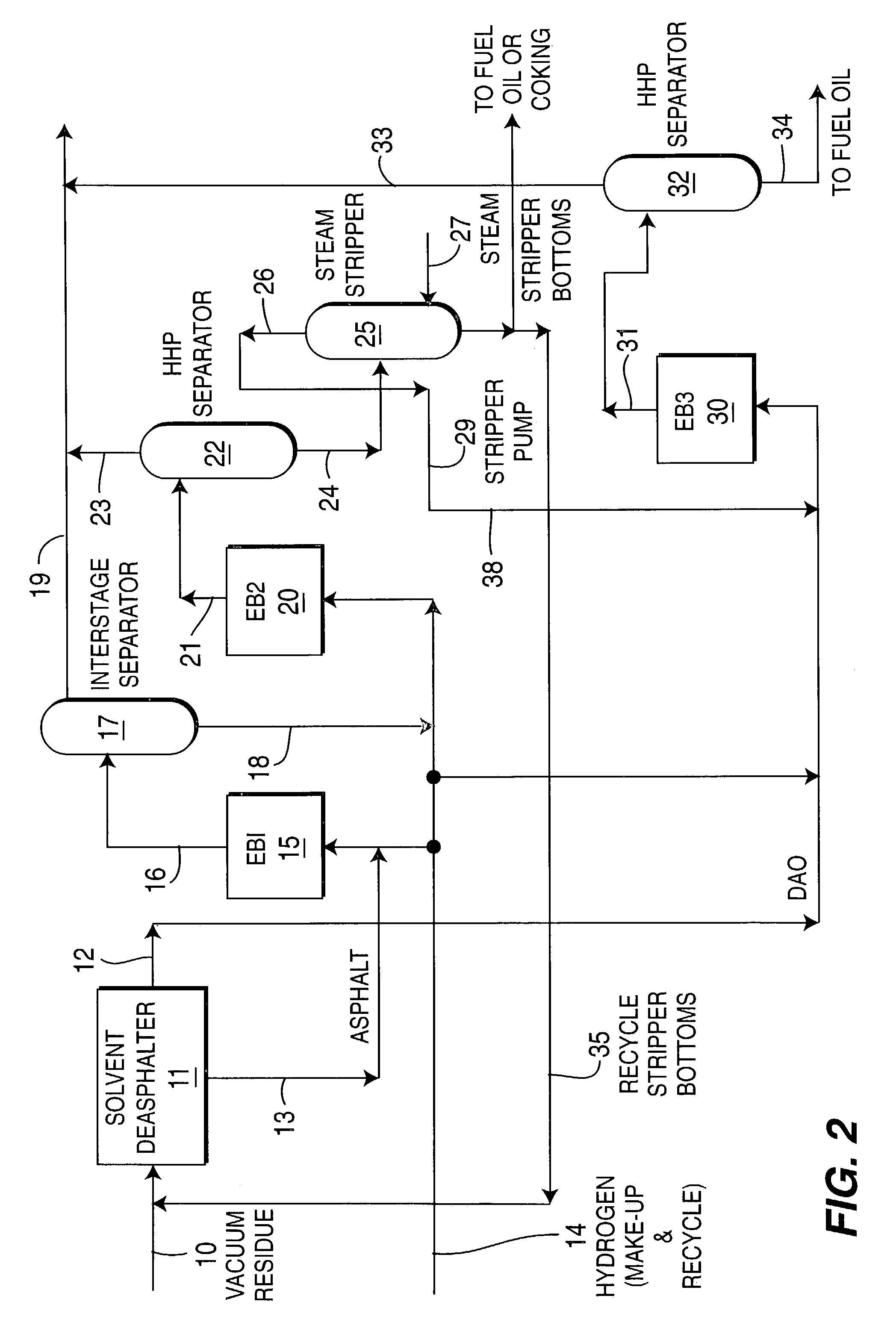Effective integration of solvent deasphalting and ebullated-bed processing
a technology of ebullated bed and solvent, which is applied in the field of effective integration of solvent deasphalting and ebullated bed processing, can solve the problems of increasing the cost of the overall plant, requiring more severe processing to remove, and reducing the yield of light gas, so as to reduce the risk of over-conversion of feedstock and resulting excessive sedimentation and fouling, and improve hydrogen efficiency. the effect of efficiency
- Summary
- Abstract
- Description
- Claims
- Application Information
AI Technical Summary
Benefits of technology
Problems solved by technology
Method used
Image
Examples
example 1
[0050]A vacuum residue feedstock derived from a Western Canadian heavy crude is converted in order to produce distillate material and a heavy fuel oil. Because of the heavy nature (high CCR and metals) of this crude, an ebullated-bed reactor is typically specified. This example will illustrate and compare conventional processing and processing incorporating this invention. The Western Canadian vacuum residue has the following inspections and yields / qualities when processed in a SDA unit.
[0051]
TABLE 4VacuumResidueAsphaltenesDAOW %10042.157.9Gravity, ° API10042.157.9Residue94012Content(975° F.),Wt. %Nitrogen,0.620.850.42Wt. %Sulfur, wt.5.537.364.2%CCR, W %244211Nickel,11523230wppmVanadium,27055166WppmC7 insolubles,1740Less thanW %50 wppm
In a pre-invention processing configuration, all of the vacuum residue is sent to an ebullated-bed reactor system and a typical maximum conversion of 65% is obtained. Typical product rates and required ebullated-bed reactor volume is shown in Table 5.
[...
PUM
 Login to View More
Login to View More Abstract
Description
Claims
Application Information
 Login to View More
Login to View More - R&D
- Intellectual Property
- Life Sciences
- Materials
- Tech Scout
- Unparalleled Data Quality
- Higher Quality Content
- 60% Fewer Hallucinations
Browse by: Latest US Patents, China's latest patents, Technical Efficacy Thesaurus, Application Domain, Technology Topic, Popular Technical Reports.
© 2025 PatSnap. All rights reserved.Legal|Privacy policy|Modern Slavery Act Transparency Statement|Sitemap|About US| Contact US: help@patsnap.com



